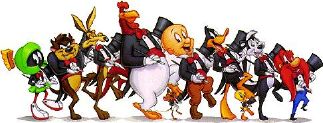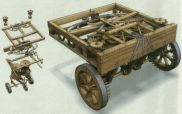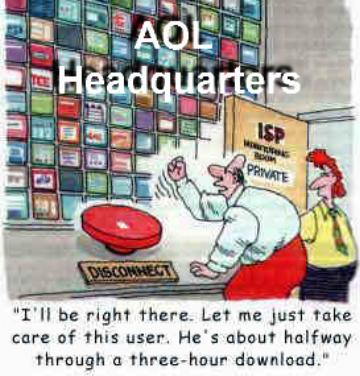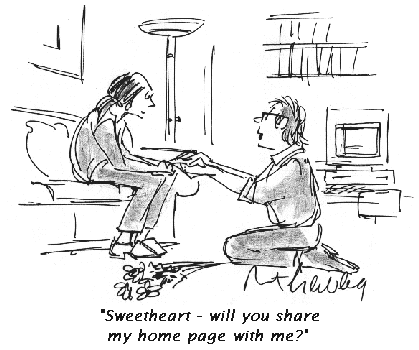

![]() Man's mind, stretched to a new idea, never goes back to its original dimensions -- Oliver
Wendell Holmes
Man's mind, stretched to a new idea, never goes back to its original dimensions -- Oliver
Wendell Holmes
Although my degree is in Chemical Engineering, software is my life (well, at least at work). I'm a team leader for a software development group at a telecommunications company in the Denver Tech Center. Part of what makes the job so much fun is the people. Below is a group picture taken earlier this year (I'm glad I dressed up for the occasion!). That's me, with my left foot raised. As you can see, we're a small but talented group. My good friend Paul is the goofy-looking one just beside me in the picture.

When I created this site waaaay back in 1997 -- when real web designers worked directly with HTML in a plain old text editor and liked it, by golly! -- I gained my first experience with HTML, Javascript, and GIF animation. This experience was later useful in setting up project pages for my company's Intranet. My development group is strongly committed to object-oriented software design. I've been doing object-oriented development since 1989, first with Smalltalk, then some C++, then Java, and .NET. My current projects typically are web-based applications.
These historical video clips depict the early days of telecommunications.
|
|
|
Computer programmers like to understand and improve the way things work. They tend to prefer manual transmissions for their automobiles, but not even 15% of the cars sold in the United States have that feature.
Have you ever noticed how programmer types seem to treat their work more like play?
 |
"Software is the music of technology" -- Jim Highsmith, The Cutter Edge "Programmers are like cats -- they both believe the world exists solely for their amusement." -- Unknown "Managing senior programmers is like herding cats." -- Dave Platt "Systems can't be designed to be idiot-proof, at least not at any reasonable cost, because society continually develops better idiots." -- Peter Coffee "They have computers, and they may have other weapons of mass destruction." -- Janet Reno, Attorney General, February 1998 |
I hope you enjoyed the Internet facts and trivia sidebar on this page. You might also enjoy the challenge of taking these Internet Trivia Quizzes: Phil Bradley's Internet Trivia Quiz, University of Wales Internet Trivia Quiz 1 and Quiz 2.

 The first design
for an analog computer was sketched by Leonardo daVinci in 1478. It is not known if
the device was ever built, but the plans describe a spring-propelled cart 20 inches
square. Its mostly likely purpose was to entertain patrons at festivals. A
forerunner to modern mobile robots, its mechanical gears and components could be
programmed to move in a complex pattern involving starts, stops, and left and right
turns. Homer's Illiad might have provided the inspiration with a
description of self-propelled mechanical beings with "wheels underneath the base of
each one so that of their own motion they could wheel into the immortal gathering."
The first design
for an analog computer was sketched by Leonardo daVinci in 1478. It is not known if
the device was ever built, but the plans describe a spring-propelled cart 20 inches
square. Its mostly likely purpose was to entertain patrons at festivals. A
forerunner to modern mobile robots, its mechanical gears and components could be
programmed to move in a complex pattern involving starts, stops, and left and right
turns. Homer's Illiad might have provided the inspiration with a
description of self-propelled mechanical beings with "wheels underneath the base of
each one so that of their own motion they could wheel into the immortal gathering."
Like most software teams, we gave Year 2000 issues serious attention. Perhaps because of the prophecies of doom (a "self-preventing prophecy", to borrow a term from author David Brin), the advent of Y2K was a yawn for most software teams. Still, the potential for real danger was there. How serious might it have been? This animated cartoon illustrates the point.
One of the hazards of software work is computer viruses. You'd think that people who are talented enough to create these nasty things would find more creative outlets (like creating web pages!). To view a rogue's gallery of viruses, turn to the next page.
Netcetera Broadcast aggregator FeedBurner says the number of podcasts it distributes now outstrips the number of radio stations on the planet, showing the growing popularity of the new media. (April 2006) Close to 3 percent of all e-mails contain viruses, according to the the British antivirus firm Sophos, which collects data from a global network of monitoring stations (Nov. 2005). By the end of 2005, 224 million North Americans were using the Internet. The number of Chinese users was 103 million, up from 22.5 million in 2000 (internetworldstats.com). The number of Americans using fast Internet connections doubled from 2001 through late 2003. By late 2004, 51% of U.S. Internet-using homes were on broadband and that number was growing at a rate of about 48% per year in major cities. 98% of the words in Webster's English Dictionary have been registered as domain names. (Wall Street Journal, 24 April 2000). Web sites worldwide in 1993: just 130. In 2000: 17 million. In 2004: 63 million. For North America in 2000, 6 billion email messages were sent each day. Number of email boxes: 250 million. The .com domain is the most popular at 45%. The country code domains .de (Germany) and .uk (United Kingdom) follow in the second and third tops spots, while the .net domain is fourth. Top 5 nations for percent of population using the Internet: Australia, USA, Canada, U.K., South Korea. Private individuals purchased just 14% of the domain names registered in 2000. The average income of these non-business domain name purchasers is $35,000-75,000. 50% of online orders for the 1999 holiday season were from women. 90% of full-time, four-year college students in the U.S. use the Internet. Number of times President Clinton mentioned the Internet in the 2000 State of the Union address: 6. There are 6 Internet Service Providers serving Iceland. |
 |
 |


